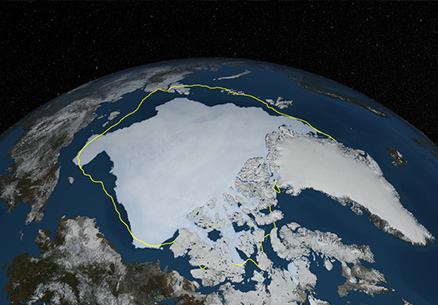1. GO WITH THE FLOW

Ice sheets are made of snow that builds up and gets compressed into ice, which then flows downhill toward the coast. What controls the mass of the Greenland and Antarctica ice sheets?


Ice sheets are made of snow that builds up and gets compressed into ice, which then flows downhill toward the coast. What controls the mass of the Greenland and Antarctica ice sheets?

What is the coldest part of an ice sheet?

"Albedo" is a measure of an object's "brightness" — i.e., how much of the sunlight that hits the surface is reflected away. Which has a higher albedo?


What is the main difference between the Arctic (North Pole) and the Antarctic (South Pole)?


When sea ice in the polar regions shrinks or grows, it affects:


Melting sea ice could raise sea level by several meters.


Since 1958, Arctic ice cover has lost how much of its thickness at the end of summer?

Ice cap melting from which land mass(es) can affect Earth's spin?


Sea ice is frozen sea water.


What proportion of the world's fresh water is stored in glaciers and ice caps?